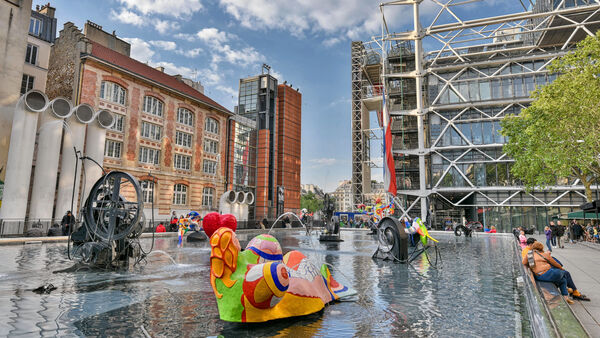Paris: A Playground for the Imagination

By Brenna Fleener
When the followers of André Breton published a surrealist map of the world in 1929, it was no accident that Paris was one of only two cities mentioned. During the preceding decade, the French capital had become for the avant garde a muse of particular stripe: a hotbed of the marvelous, the fantastic, the grotesque, and the illogical. For Breton, the movement's founder, and for many of his fellow artists and intellectuals like Dalí, Míro, Duchamp, de Chirico, and Man Ray, the urban fabric of Paris was embedded with all variety of surprises: Whether they were climbing the towers of Notre-Dame or simply watching street life pass with "its cares and glances," for these Modernists Paris provided endless fodder for the imagination. In some ways, the artistic and literary "dreamscapes" created by Surrealist artists provided merely veiled images of the French capital, the original home of the marvelous and the sensory.
Even today, hidden beneath its veneer of chic, Paris retains visual evidence of its circus-like alter ego in the form of fantastical public sculpture, wild architecture, and thought-provoking installation art. These surrealist niches (and every arrondissement seems to have some) remind us — especially kids among us, who seem forever better attuned to the power of the surreal — that Paris has always been, first and foremost, a playground for the imagination. Here are a few of my favorites:
- The Niki de Saint Phalle and Tinguely fountains at the Georges Pompidou Center are a playtime favorite. These colorful ceramic/mosaic sculptures of people, animals, and unidentifiable critters frolic (along with some real children, in the warmer summer months) in the fountains just outside of the Pompidou Center. The latter, designed by Richard Rogers and Renzo Piano, is itself a surreal experiment in which the mechanics of building — the ductwork and structural trussing — are worn on the outside, begging the question of what's shown and what's hidden in architecture.
- Used during the Middle Ages to frighten away evil spirits, the gargoyles of Notre-Dame became symbolic of mystery and the unknown during the 1920s. Kids love to circle the building and count how many different faces and glaring eyes extend spider-like from Notre-Dame's already impressive towers (though many are likely to be obscured while reconstruction is underway).
- In the somewhat hidden courtyard of the Palais Royal, artist David Buren's playful black-and-white striped columns of varying heights seem to grow organically from the ground, at once echoing the classical columns of the portico that ring the piazza and making the open air space seem like a large, human-sized checkerboard, à la Alice Through the Looking Glass. This has become one of the most exciting places in the city for kids.
- Henri de Miller's Ecoute ("Listen") statue in the Jardin Nelson Mandela epitomizes the surreal. A 70-ton statue of an enormous face and hand appears surprisingly on the border of the Les Halles gardens, at the center of the Place René Cassin. The white and black cobblestones of the place follow a spiraling pattern, visual representations of the movement of sound waves as they approach the statue's ears, and a bit of landscape art that seems to send children spinning (and screaming) through the park.
- Set on a hill in the 19th arrondissement, the park called Buttes Chaumont, once a site for gallows and a quarry for many of the city's buildings, was converted into a park by Baron Haussmann and the landscape architect Adolphe Alphand. Buttes Chaumont is now a fantastic world apart from the bustling city, equipped with a 32-meter waterfall, circular lake, 63-meter long suspension bridge, and a series of man-made grottos (that seem to have been borrowed directly from "Pirates of the Caribbean") that lead up to a Sybillian temple at the crown of the hill...a taste of 19th-century surreal city that continues to delight today.
Brenna Fleener is the former director of Context Paris, a recommended walking-tour company.

